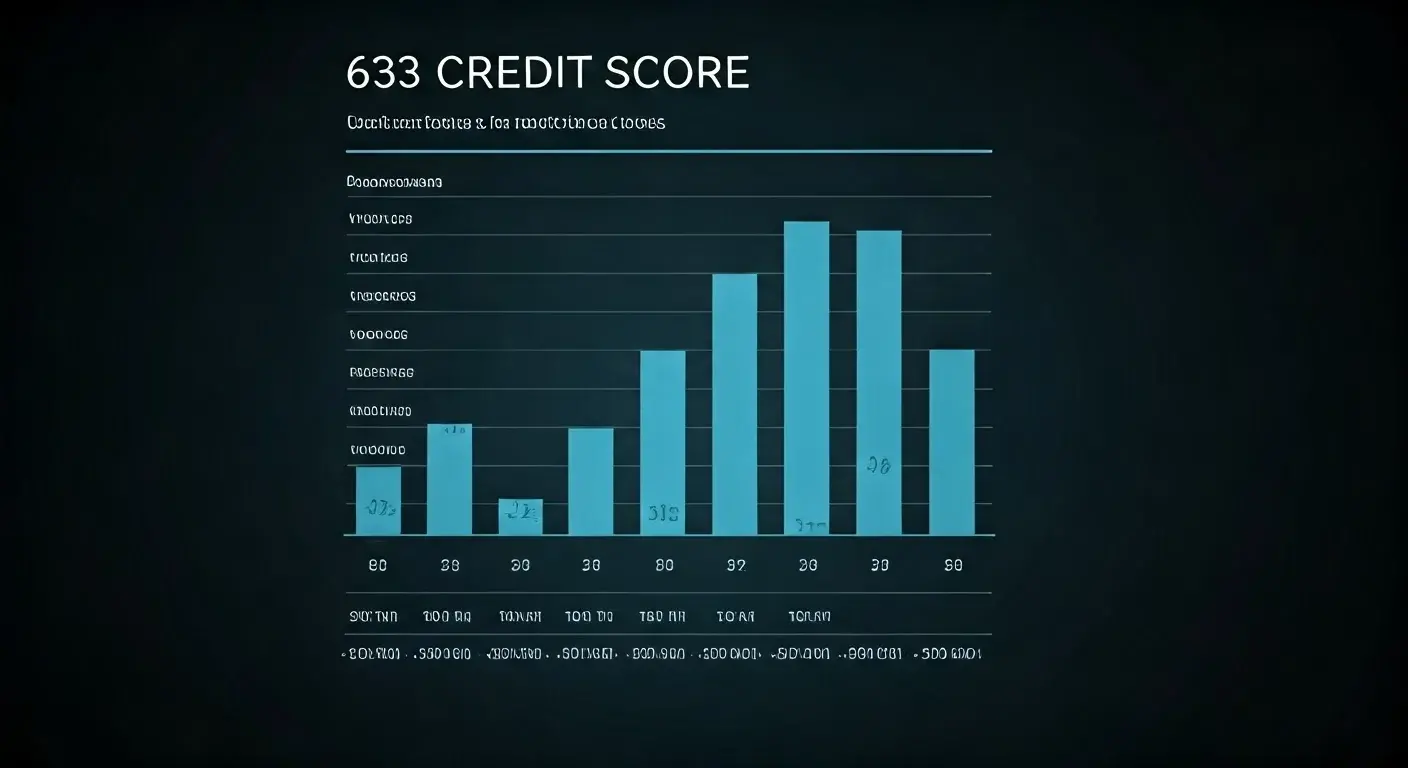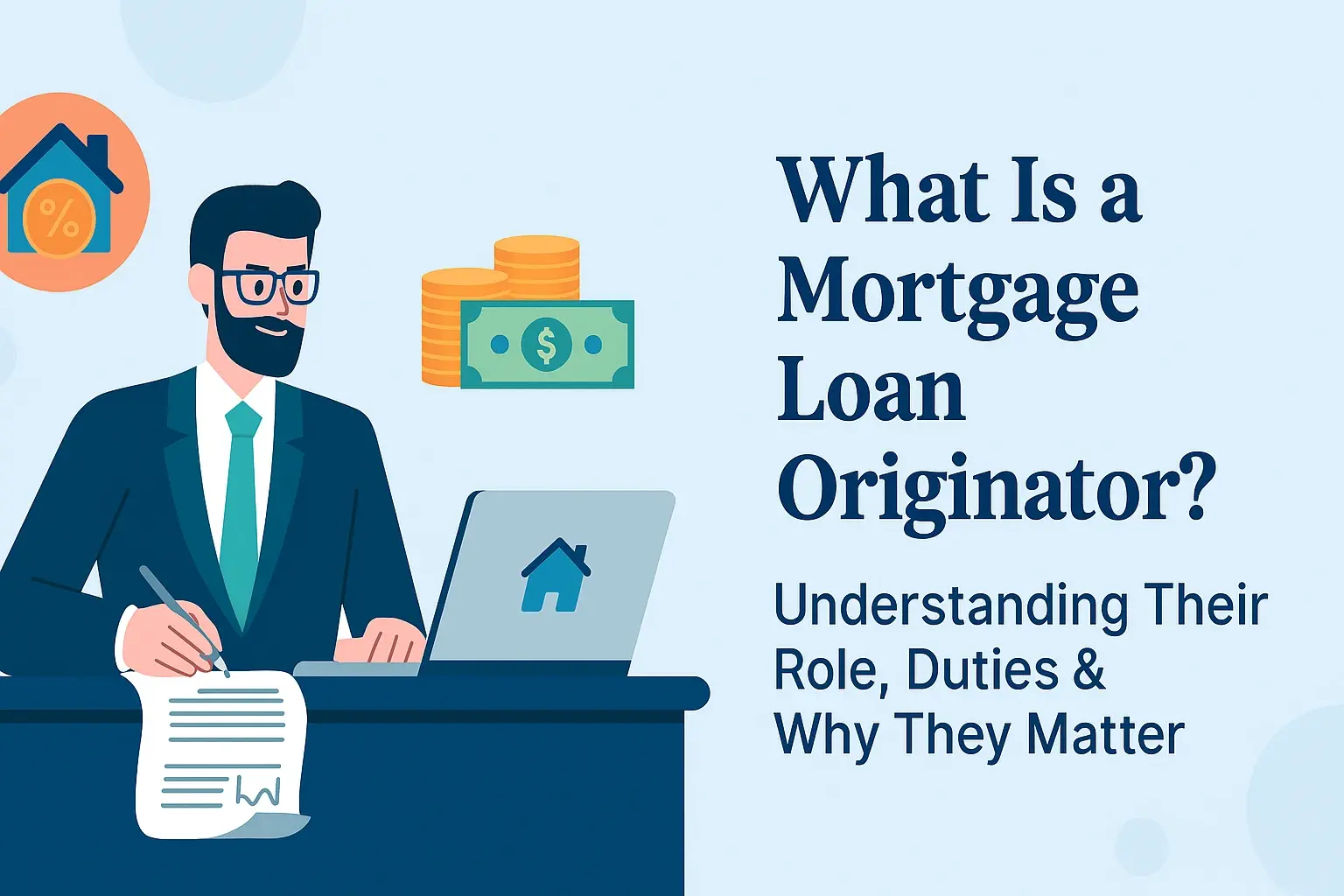-
Posted on: 28 Jan 2025

-
A 633 credit score is considered fair, sitting on the cusp of good. This guide offers actionable strategies and expert insights for boosting your 633 credit score, transforming it into a stronger financial asset and unlocking better lending opportunities. Discover what you should do now.
Understanding Your 633 Credit Score
A credit score is a numerical representation of your creditworthiness, a three-digit number that lenders use to assess the risk involved in lending you money. Scores typically range from 300 to 850. In 2025, a 633 credit score generally falls into the "fair" or "average" category. This means you're not considered a high-risk borrower, but you're also not a prime candidate for the most favorable loan terms. While you can still qualify for credit, such as credit cards or loans, you'll likely face higher interest rates and potentially stricter eligibility requirements compared to someone with a score in the "good" or "excellent" range (typically 670 and above).
Understanding where you stand is the first step toward improvement. A 633 score indicates that you have a credit history, but there are likely areas where you can make significant positive changes. Lenders view this score as a signal that while you've managed credit, there might be some past issues or a lack of consistent, positive credit behavior. The good news is that this score is highly improvable. With focused effort and strategic financial management, you can move this number upwards, opening doors to better financial products and saving you money over time through lower interest rates.
The implications of a 633 score are broad. It can affect your ability to get approved for a mortgage, auto loan, or even rent an apartment. Landlords and lenders alike use credit scores to gauge reliability. For instance, a mortgage lender might offer you a loan at a 7% interest rate with a 633 score, whereas someone with a 750 score might secure the same loan at 5.5%. Over the life of a 30-year mortgage, this difference can amount to tens of thousands of dollars in savings. Similarly, credit card issuers might offer cards with lower credit limits, higher annual fees, or less attractive rewards programs.
This guide is designed to provide you with a comprehensive roadmap. We will break down the components that make up your credit score, identify the specific actions you should take to address any weaknesses, and offer practical advice for long-term credit health. By the end, you'll have a clear understanding of what you should do to boost your 633 credit score and achieve your financial goals.
Key Factors Impacting Your Score
Credit scoring models, like FICO and VantageScore, are complex algorithms that analyze various aspects of your financial behavior. While the exact weighting can vary slightly between models and versions, the core factors remain consistent. Understanding these pillars is crucial for targeting your improvement efforts effectively. For a 633 credit score, identifying which of these factors are holding you back is paramount.
Payment History (Approximately 35% of Score)
This is the single most influential factor. It reflects whether you pay your bills on time. Late payments, missed payments, defaults, bankruptcies, and collections all significantly damage your score. Even a single 30-day late payment can have a noticeable negative impact. For a 633 score, it's highly probable that past late payments are a primary contributor.
Credit Utilization Ratio (Approximately 30% of Score)
This refers to the amount of credit you are using compared to your total available credit. A high utilization ratio (e.g., using 80% or more of your credit limit on a card) signals to lenders that you might be overextended and a higher risk. Keeping this ratio low, ideally below 30% and even better below 10%, is crucial for a healthy score. If your 633 score is due to high balances on your credit cards, this is a critical area to address.
Length of Credit History (Approximately 15% of Score)
This factor considers the age of your oldest credit account, the age of your newest account, and the average age of all your accounts. A longer credit history generally indicates more experience managing credit, which is viewed favorably. If your credit history is relatively short, this factor might be limiting your score, though it's often less impactful than payment history or utilization for a 633 score unless it's exceptionally short.
Credit Mix (Approximately 10% of Score)
This factor looks at the variety of credit accounts you have, such as credit cards (revolving credit) and installment loans (mortgages, auto loans, student loans). Having a mix of credit types can be beneficial, as it shows you can manage different forms of debt responsibly. However, this is a less significant factor, and it's generally not advisable to open new accounts solely to improve your credit mix.
New Credit (Approximately 10% of Score)
This factor considers how many new credit accounts you've opened recently and how many hard inquiries you have on your credit report. Opening many new accounts in a short period or having numerous hard inquiries can signal increased risk. A 633 score might be impacted if you've recently applied for a lot of credit.
Understanding these components allows you to prioritize your efforts. For someone with a 633 credit score, the most impactful actions will likely revolve around improving payment history and reducing credit utilization.
Step-by-Step Guide to Boosting Your 633 Score
Improving a 633 credit score requires a strategic and consistent approach. It's not about quick fixes but about building sustainable, positive financial habits. Here’s a detailed, step-by-step guide on what you should do to see tangible results.
Action 1: Payment History is King
Since payment history accounts for the largest portion of your credit score, making on-time payments is non-negotiable. If you have any past-due accounts, bring them current immediately. For any ongoing accounts, ensure you pay at least the minimum amount due by the due date, every single month. Ideally, pay the full statement balance to avoid interest charges.
Step 1.1: Review Your Credit Reports for Errors. Before anything else, obtain your free credit reports from Equifax, Experian, and TransUnion at AnnualCreditReport.com. Scrutinize them for any inaccuracies, especially regarding late payments. If you find an error, dispute it immediately with the credit bureau and the creditor. This process can sometimes remove erroneous negative marks.
Step 1.2: Set Up Payment Reminders. To ensure you never miss a payment again, set up calendar alerts, automated text messages, or email reminders a few days before your due dates. Many credit card companies and lenders also offer automatic payment options. You can set them up to pay the minimum balance to avoid late fees and negative reporting, but always aim to pay more if possible.
Step 1.3: Prioritize Bringing Past-Due Accounts Current. If you have accounts that are 30, 60, or 90 days past due, making them current is your absolute top priority. While the past late payment will remain on your report for several years, stopping the delinquency is crucial to prevent further damage and to start the clock on positive payment history moving forward.
Step 1.4: Consider a Secured Credit Card for Building Positive History. If your credit history is thin or marred by past issues, a secured credit card can be an excellent tool. You make a cash deposit, which becomes your credit limit. Use it for small, everyday purchases and pay it off in full and on time each month. This demonstrates responsible credit management to the bureaus.
Step 1.5: Explore "Goodwill Adjustments." If you have a single, isolated late payment that was uncharacteristic, you can try contacting the creditor and politely asking for a "goodwill adjustment" to remove the late payment from your report. This is not guaranteed, but it's worth a try, especially if you have a long history of on-time payments with that creditor.
Action 2: Reduce Credit Utilization
High credit utilization is a significant drag on credit scores. For a 633 score, this is likely a major area for improvement. The goal is to lower the amount of credit you're using relative to your total available credit.
Step 2.1: Calculate Your Current Utilization. For each credit card, divide the current balance by the credit limit to get your utilization percentage. Then, sum up all your balances and divide by the sum of all your credit limits to get your overall utilization. For example, if you have a card with a $500 balance and a $1,000 limit, your utilization is 50%. If your total balances are $3,000 and your total limits are $6,000, your overall utilization is 50%.
Step 2.2: Pay Down Balances Aggressively. The most direct way to reduce utilization is to pay down your credit card balances. Focus on paying down cards with the highest utilization ratios first, or tackle smaller balances to get quick wins and free up credit. Aim to get each card's utilization below 30%, and ideally below 10%.
Step 2.3: Avoid Maxing Out Credit Cards. Never use your entire credit limit. Even if you pay it off before the statement closing date, the reported balance to the credit bureaus will reflect the high utilization, which can hurt your score. Make purchases strategically to keep reported balances low.
Step 2.4: Request Credit Limit Increases. If you have a good payment history with a particular card issuer, you can request a credit limit increase. If approved, this will lower your utilization ratio without you having to pay down balances immediately (assuming you don't increase your spending). Be aware that some issuers may perform a hard inquiry for this, so check their policy first.
Step 2.5: Consider Balance Transfers (with Caution). If you have high-interest debt, a balance transfer to a card with a 0% introductory APR can help you pay down the principal faster. However, be mindful of balance transfer fees and ensure you have a plan to pay off the balance before the introductory period ends. Also, some balance transfer cards do not report to all three credit bureaus, which could limit their score-boosting impact.
Action 3: Address Negative Items
Negative items like collections, charge-offs, judgments, and liens can severely impact your score. Addressing them is crucial for moving past a 633 score.
Step 3.1: Understand the Impact of Negative Items. These items indicate serious delinquency or default. The older they are, the less impact they have, but they can remain on your report for up to seven years (or longer for bankruptcies). For a 633 score, you may have one or more of these.
Step 3.2: Negotiate with Collection Agencies. If you have accounts in collections, contact the collection agency. You may be able to negotiate a "pay for delete" agreement, where they agree to remove the collection from your credit report in exchange for payment. Get this agreement in writing before you pay. If "pay for delete" isn't possible, paying the collection can still help by showing the account is resolved, though the original delinquency date will still influence the score.
Step 3.3: Settle Charge-Offs. A charge-off is when a lender has given up on collecting a debt and writes it off as a loss. While it's still a negative mark, settling a charge-off can be better than leaving it unpaid. Negotiate a settlement amount, ideally less than the full balance, and again, get any agreement in writing.
Step 3.4: Dispute Inaccurate Negative Information. As mentioned in Action 1, meticulously review your reports for any negative items that are not yours or are inaccurate. Dispute them promptly with the credit bureaus.
Step 3.5: Understand Statute of Limitations. Be aware of the statute of limitations for debt collection in your state. While a debt may still appear on your credit report, the creditor may no longer be able to sue you for it if the statute of limitations has passed. This doesn't remove it from your credit report, however.
Action 4: Manage Credit Age and Mix
While these factors are less impactful than payment history and utilization, they still play a role in your overall score.
Step 4.1: Keep Old Accounts Open. If you have older credit accounts that are in good standing and have no annual fees, consider keeping them open. Closing old accounts can reduce your average age of credit and can also increase your credit utilization ratio if it was a credit card with a zero balance.
Step 4.2: Don't Close Unused Credit Cards Recklessly. Unless there's a compelling reason (like a high annual fee you can't justify), it's often better to keep unused credit cards open, especially if they are older. Make a small purchase on them occasionally and pay it off to keep them active.
Step 4.3: Understand the Value of Credit Mix. Having a mix of revolving credit (credit cards) and installment loans (mortgages, auto loans) can be beneficial. However, do not open new accounts solely to improve your credit mix. Focus on managing the credit you have responsibly. If you only have credit cards, and you need an auto loan for a car, getting one and managing it well will naturally diversify your credit mix over time.
Action 5: Responsible New Credit
Applying for too much credit too quickly can signal financial distress to lenders and negatively impact your score.
Step 5.1: Limit New Credit Applications. Only apply for credit when you genuinely need it. Each application for credit typically results in a hard inquiry on your credit report, which can slightly lower your score for a short period.
Step 5.2: Space Out Applications. If you do need to apply for multiple credit products, space them out over several months rather than applying for several at once. This minimizes the impact of multiple hard inquiries.
Step 5.3: Use Pre-Qualification Tools. Many credit card issuers and lenders offer pre-qualification tools that allow you to check your likelihood of approval without a hard inquiry. This can help you identify cards or loans you're more likely to get approved for, reducing unnecessary applications.
Step 5.4: Consider a Credit-Builder Loan. If you need to establish or rebuild credit history and don't qualify for a secured card, a credit-builder loan from a credit union or community bank can be an option. The loan amount is held in an account and released to you after you've made all the payments. This is reported to credit bureaus as an installment loan.
Implementing these steps consistently is key. For example, consistently paying down credit card balances to below 30% utilization and making all payments on time for six months can lead to a noticeable increase in your score.
Tools and Resources for Credit Improvement
Navigating credit repair can feel daunting, but numerous tools and resources are available to assist you. Leveraging these can streamline the process and provide valuable insights.
Credit Monitoring Services
Services like Credit Karma, Credit Sesame, and Experian's free services offer free access to your credit scores and reports from one or more bureaus. They often provide personalized recommendations for improvement based on your credit profile. Many also offer alerts for significant changes to your credit report, helping you stay on top of potential issues or fraudulent activity.
Credit Counseling Agencies
Non-profit credit counseling agencies, accredited by organizations like the National Foundation for Credit Counseling (NFCC) or the Financial Counseling Association of America (FCAA), can provide expert advice. They can help you create a budget, negotiate with creditors, and even set up a Debt Management Plan (DMP). A DMP involves making one monthly payment to the agency, which then distributes it to your creditors. This can help you pay down debt more efficiently and often results in lower interest rates, all while demonstrating responsible behavior to credit bureaus.
Credit Report Dispute Tools
When you find errors on your credit report, you have the right to dispute them. The credit bureaus (Equifax, Experian, TransUnion) have online dispute portals. Many credit monitoring services also offer tools to help you initiate disputes. Remember to gather any supporting documentation, such as payment receipts or correspondence with creditors.
Budgeting Apps and Software
Tools like Mint, YNAB (You Need A Budget), or PocketGuard can help you track your spending, identify areas where you can cut back, and allocate more funds towards paying down debt. Effective budgeting is the foundation for managing your credit utilization and ensuring on-time payments.
Secured Credit Cards and Credit-Builder Loans
As mentioned, these are invaluable tools for individuals with limited or damaged credit. Secured credit cards require a deposit, acting as collateral, and credit-builder loans hold the borrowed amount in an account. Both report your payment activity to the credit bureaus, helping you build a positive credit history. Look for options from reputable banks and credit unions.
Educational Resources
Websites like the Consumer Financial Protection Bureau (CFPB), the Federal Trade Commission (FTC), and reputable financial education sites offer a wealth of information on credit scores, credit reports, and consumer rights. Understanding your rights and how credit scoring works is a powerful tool in itself.
By utilizing these resources, you can gain a clearer picture of your financial standing, identify specific areas for improvement, and implement strategies more effectively. For instance, using a budgeting app can reveal where your money is going, allowing you to redirect funds to pay down high-interest credit card debt, thereby lowering your credit utilization.
Common Pitfalls to Avoid
While striving to boost your 633 credit score, it's easy to fall into common traps that can hinder your progress or even set you back. Awareness of these pitfalls is as important as knowing what to do.
Closing Old, Unused Credit Cards
As discussed, closing older accounts can shorten your credit history length and increase your credit utilization ratio, both of which can negatively impact your score. Keep them open if they don't have annual fees and you can manage them responsibly.
Applying for Too Much Credit at Once
Each hard inquiry from a credit application can slightly lower your score. Applying for multiple credit cards or loans in a short period signals higher risk to lenders and can lead to a noticeable drop in your score, counteracting your efforts.
Ignoring Small Debts or Collections
Even small collection accounts can significantly harm your credit score. It's crucial to address all negative items, regardless of their size. Negotiating a settlement or pay-for-delete agreement is often a worthwhile endeavor.
Falling for "Credit Repair Scams"
Be wary of companies that promise to erase accurate negative information from your credit report or guarantee a specific score increase quickly. Legitimate credit repair services cannot do this. You can often achieve the same results yourself by directly working with credit bureaus and creditors.
Assuming All Credit Scores Are the Same
There are many different credit scoring models (FICO, VantageScore) and versions of these models. The score you see on a free credit monitoring service might differ from the score a lender uses. Focus on improving the underlying factors that influence all scores.
Not Checking Your Credit Reports Regularly
Errors on your credit report are common. Failing to check your reports regularly means you might miss inaccuracies that are negatively impacting your score, or you might miss fraudulent activity.
Overspending After Getting Approved for New Credit
It can be tempting to spend more once you're approved for a new credit card or loan. However, this can quickly lead to high credit utilization and increased debt, undoing any progress made.
Focusing Only on Score, Not Financial Habits
A credit score is a reflection of your financial habits. While aiming for a higher score is good, the ultimate goal should be to develop responsible financial behaviors, such as consistent on-time payments and low credit utilization, which will naturally lead to a better score.
Avoiding these common mistakes will help ensure your efforts to boost your 633 credit score are productive and lead to sustainable financial health.
Timeline and Expectations
Improving a credit score is a marathon, not a sprint. A 633 score is a fair starting point, and with consistent effort, you can see significant improvements, but it takes time. Setting realistic expectations is crucial for staying motivated.
Short-Term Impact (1-3 Months)
Within the first one to three months of implementing positive changes, you might start to see small increases in your score. For example, paying down credit card balances to significantly lower your utilization ratio can have a relatively quick impact, often reflected in your score within one to two billing cycles. Bringing past-due accounts current will stop further damage and start the process of rebuilding positive history.
Medium-Term Impact (3-12 Months)
By six to twelve months of consistent positive behavior, you should see more substantial score increases. If you've been diligently making on-time payments, keeping utilization low, and addressing negative items, your score could potentially climb into the "good" range (670+). For instance, maintaining credit utilization below 10% for several months can significantly boost your score. The impact of settled collections or charge-offs will also become more pronounced.
Long-Term Impact (1-2 Years and Beyond)
The full benefits of credit repair unfold over the long term. As older negative marks age and fall off your report (typically after seven years), and as you continue to demonstrate responsible credit management over an extended period, your score will continue to climb. A longer credit history with a consistent record of on-time payments and low utilization is the bedrock of an excellent credit score. By the one-to-two-year mark, you should be well on your way to achieving scores that qualify you for prime lending rates.
Factors Influencing the Timeline
- Severity of Negative Items: The presence of recent bankruptcies, judgments, or multiple severe delinquencies will naturally take longer to overcome than a few isolated late payments.
- Consistency of Effort: Sporadic efforts will yield sporadic results. Consistent, disciplined financial management is key.
- Credit Utilization: This factor can be improved relatively quickly by paying down balances, but maintaining low utilization requires ongoing discipline.
- Credit Mix and Age: These factors improve gradually over time and are less directly influenced by immediate actions.
It's important to remember that credit scoring models are designed to predict future risk based on past behavior. Therefore, demonstrating a sustained pattern of responsible behavior is what truly builds a strong credit score. While you might see initial gains within months, achieving a truly excellent score that unlocks the best financial opportunities is a process that takes consistent dedication over a longer period.
Conclusion: Your Path to a Better Score
A 633 credit score is a stepping stone, not a destination. It signifies that you have a credit history, but there's significant room for improvement. By understanding the core components of your credit score—payment history, credit utilization, credit age, credit mix, and new credit—you are empowered to take targeted action. The journey from a 633 score to a higher, more advantageous one hinges on consistent, responsible financial habits.
Your immediate focus should be on ensuring every payment is made on time, every single month, and aggressively reducing your credit card balances to bring your utilization ratio below 30%, ideally below 10%. Simultaneously, meticulously review your credit reports for errors and address any negative items like collections or charge-offs through negotiation or dispute. While credit age and mix are important, they improve naturally with time and responsible management of existing accounts. Avoid the pitfalls of applying for excessive credit and falling for quick-fix schemes.
Leverage the available tools and resources, from free credit monitoring services to reputable credit counseling agencies, to guide your efforts. Be patient; significant improvements typically take several months to a year or more of sustained positive activity. The rewards, however, are substantial: lower interest rates on loans and credit cards, better terms on mortgages and auto loans, and increased access to financial products. By implementing the strategies outlined in this guide, you are well on your way to not just boosting your 633 credit score, but building a foundation for lasting financial well-being.










